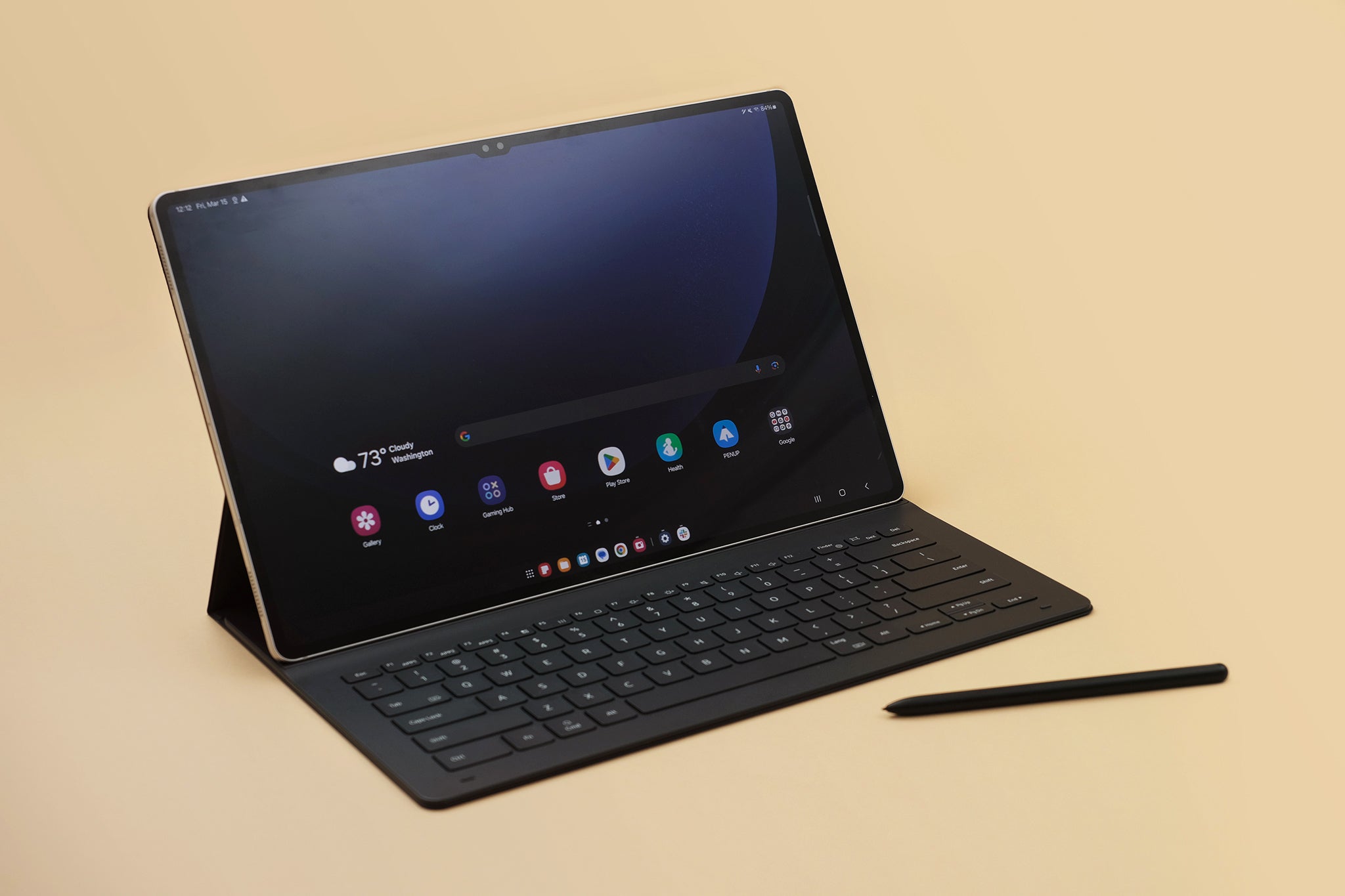
Introduction to Using an Android Tablet with a Keyboard
Connecting a keyboard to an Android tablet can boost productivity by allowing faster typing and multitasking. This feature supports various keyboard types, including Bluetooth and USB keyboards. Here are some key benefits:
- Transforms Your Tablet into a Mini-Laptop: Turn your Android tablet into a powerful device capable of handling tasks similar to a laptop.
- Enhances Productivity: Faster typing and multitasking capabilities make it ideal for writing, editing, and browsing.
- Supports Various Keyboard Types: Both Bluetooth and USB keyboards are supported, providing flexibility in choosing the type of keyboard that suits your needs.
- Customizable Settings and Shortcuts: Adjust keyboard settings and customize shortcuts to fit your needs, enhancing the user experience.
- Ideal for Writing, Editing, and Browsing: The keyboard layout matches your language preference, making it easy to use for various tasks.
What You Need and Device Compatibility
Before starting, ensure your device meets the necessary requirements:
- Android Version: Your Android tablet should be running Android 5.0 (Lollipop) or higher. Check this by going to "About Tablet" in your tablet's settings.
- Bluetooth Support: If using a wireless keyboard, your tablet must support Bluetooth. For wired keyboards, ensure your tablet has a USB-OTG (On-The-Go) port.
- Keyboard Compatibility: Logitech, Microsoft, and Anker keyboards generally work well with most Android tablets. Check the keyboard's packaging or website for Android compatibility.
Steps to Connect Your Keyboard
Connecting a keyboard to your Android tablet is a simple process:
- Turn On Your Tablet: Start by turning on your Android tablet.
- Go to Settings: Tap the gear icon in your tablet's home screen to access the settings menu.
- Select Bluetooth: In the settings menu, select "Bluetooth" from the list of options.
- Turn On Bluetooth: Toggle the switch to turn on Bluetooth.
- Put Your Keyboard in Pairing Mode: Check your keyboard's manual for instructions on how to put it in pairing mode.
- Find Your Keyboard: On your tablet, go to "Available Devices" under the Bluetooth settings and find your keyboard.
- Tap the Keyboard Name: Tap the name of your keyboard to pair it with your tablet.
- Enter the Pairing Code (if Required): If prompted, enter the pairing code and press Enter.
- Wait for Confirmation: Wait for confirmation that the devices are connected.
- Open an App: Open an app to test the keyboard. Start typing to ensure it works.
Tips for Efficient Keyboard Use
Once the keyboard is connected, here are some tips to help use it efficiently:
Pairing
- Turn On Bluetooth on Both Devices: Make sure both devices have Bluetooth turned on.
- Go to Settings on Your Tablet: Select "Bluetooth" from the menu.
- Find Your Keyboard: Look for your keyboard in the list of available devices and tap to connect.
Shortcuts
- Learn Keyboard Shortcuts: Familiarize yourself with common keyboard shortcuts like Ctrl+C for copy and Ctrl+V for paste. These can save a lot of time.
Typing
- Use a Stand: Prop up your tablet using a stand to make typing more comfortable and maintain good posture.
Apps
- Use Productivity Apps: Apps like Google Docs or Microsoft Word work well with keyboards and make editing documents easier.
Travel
- Get a Keyboard Case: Consider getting a keyboard case that protects your tablet and makes it easy to carry both together.
Battery
- Keep an Eye on Your Keyboard's Battery: Charge your wireless keyboard regularly to avoid interruptions.
Customization
- Adjust Keyboard Settings: Customize keyboard settings in your tablet’s settings menu. Change the key repeat rate or customize shortcuts to fit your needs.
Gaming
- Check Game Settings: Some games support keyboard input. Check game settings to see if you can use your keyboard for better control.
Multitasking
- Use Split-Screen Mode: Use split-screen mode to open two apps side by side and switch between them efficiently using the keyboard.
Security
- Use a Keyboard with a Built-in Trackpad: A keyboard with a built-in trackpad reduces the need to touch the screen, keeping it cleaner and more secure.
Updates
- Keep Your Tablet and Keyboard Firmware Updated: Ensure compatibility and access to new features by keeping both your tablet and keyboard firmware updated.
Troubleshooting Common Issues
Sometimes, issues might arise while setting up or using your keyboard with your Android tablet. Here are some common issues and their solutions:
Issue 1: Keyboard Not Connecting
- Solution: Ensure that both devices have Bluetooth turned on. Restart both devices if necessary. Check if the keyboard is in pairing mode and try pairing again.
Issue 2: Keyboard Not Recognized
- Solution: Make sure the keyboard is compatible with your tablet. Check the packaging or website of the keyboard for Android compatibility. If using a wired keyboard, ensure it is connected via a USB-OTG cable.
Issue 3: Keyboard Lagging
- Solution: Adjust the key repeat rate in your tablet’s settings menu. This can help reduce lag and improve typing experience.
Issue 4: Battery Life Issues
- Solution: If using a wireless keyboard, look for keyboards with long battery life or rechargeable options. Regularly charge your keyboard to avoid interruptions.
Using an Android tablet with a keyboard is a powerful way to boost productivity and user experience. By following these steps and tips, you can set up and use your keyboard efficiently. Whether writing documents, browsing the web, or multitasking, a keyboard can make a significant difference in how you interact with your Android tablet. Keep your tablet and keyboard firmware updated and troubleshoot any issues that arise to ensure seamless performance.
